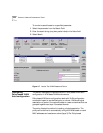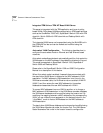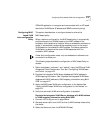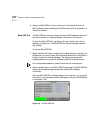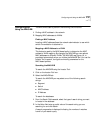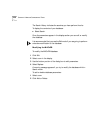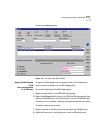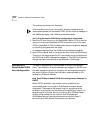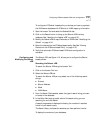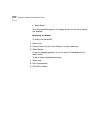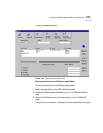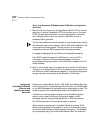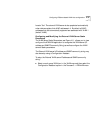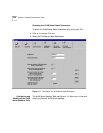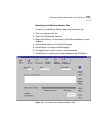
4-32 CHAPTER 4: NETWORK CONFIGURATION TASKS
This removes the device from the policy.
Once a device or port is put into a policy, all open/unused ports are
automatically placed into the default VLAN. You will notice a message on
the NMS screen saying that VLAN move has taken place.
Verify that Automatic VLAN Auto-configuration is Activated.
1 Move the PC from the port on the SuperStack II Switch 2700 to another
open port on another SuperStack II 2700 (or another port on the same
2700) or SuperStack II 1000 (the destination device must also be assigned
to the policy) and generate a few pings.
A message is displayed that the VLAN move completed successfully.
2 Open the front panel view of the device and then check the VLAN colors.
The port on the device where the PC is connected is now configured into
the VLAN that its MAC address was mapped to. This VLAN configuration
change may take a few seconds to be reflected in VLAN maps.
Configuring IP
Subnet-based VLAN
Auto-configuration
This section describes the IP Subnet-based VLAN auto-configuration
policy. If an endstation IP subnet address is pre-mapped to a VLAN, then
the edge devices configured for this policy will automatically configure
the correct VLAN on the port that this station attaches based on the
endstation’s IP Subnet Address.
How Does IP Subnet-based VLAN Auto-configuration Compare to
DHCP?
When DHCP is enabled in the network, roving endstations can
automatically query for and get an IP address and network access
dynamically. The access to the network may not be optimal as the
endstation is configured into the subnet of the building or location. Its
services may be in another subnet or building. With IP Subnet-based
VLANs, roving endstations can maintain their IP address and
VLAN/Subnet and get optimal performance connectivity (layer 2
connectivity) to their services (file services, print services).



